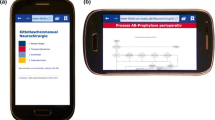Abstract
Ambulatory surgery has proliferated as a result of increasing inpatient costs1. Its high level of safety has resulted in its extension to less healthy, often elderly patients2. Patient compliance with instructions is essential to avoid morbidity. We aimed to identify subgroups potentially at risk due to non-compliance.
A confidential questionnaire was administered to 220 consecutive daycase patients. Data included: patient demographics, duration of fasting, taking of medications that morning, importance of fasting and medication instructions, mode of post-discharge transport, and whether they had someone to stay with them that night.
Seven (3.5 per cent) patients admitted to non-compliance with fasting instructions, with 8 per cent considering these instructions non-essential. Thirteen of 59 patients on medications took them against instructions, with 9 patients considering the instructions non-essential. Eight patients admitted intending to drive home; 7 per cent admitted to having no one to stay with them on the night of surgery.
A significant minority of patients (particularly male) admit to non-compliance with ambulatory surgery instructions; these figures may be underestimates. Absence of anaesthetic/medical input and lack of reinforcement probably contribute to non-compliance. Some medication-related noncompliance may be appropriate (e.g. antianginals, antihypertensives) and may reflect conflicting instructions given to the patient. The stopping of all medications prior to ambulatory surgery needs revision. Older patients living alone may not be suitable candidates for ambulatory anaesthesia.
Similar content being viewed by others
References
Ancona-Berk, V. A., Chalmers, T. C. An analysis of the costs of ambulatory and inpatient care. Am. J. Public Health 1986; 76: 1102–1104.
Kitz, D. S., Slusarz-Ladden, C., Lecky, J. H. Hospital resources used for inpatient and ambulatory surgery. Anesthesiology 1988; 69: 383–386.
Natof, N. E. Complications associated with ambulatory surgery. JAMA 1980; 294: 1116–1118.
Duncan, P. G., Cohen, M. M. Are anesthetic complications predictable in day surgical practice? Anesth. Anaig. 1992; 74: S76.
Warner, M. A., Shields, S. E., Chute, C. G. Major morbidity and mortality within one month of ambulatory surgery and anesthesia. JAMA 1993; 270: 1437–1441.
Warner, M. A., Hosking, M. P., Lobdell, C. M., Offord, K. P., Melton, L. J. Surgical procedures among those ≖ 90 years of age: A population based study in Olmstead County, Minnesota 1975–1985. Ann. Surg. 1988; 207: 380–386.
Meridy, H. W. Criteria for selection of ambulatory surgical patients and guidelines for anesthetic management: A retrospective study of 1553 cases. Anesth. Analg. 1982; 61: 921–926.
Author information
Authors and Affiliations
Rights and permissions
About this article
Cite this article
Laffey, J.G., Carroll, M., Donnelly, N. et al. Instructions for ambulatory surgery — patient comprehension and compliance. Ir. J. Med. Sc. 167, 160–163 (1998). https://doi.org/10.1007/BF02937929
Issue Date:
DOI: https://doi.org/10.1007/BF02937929




